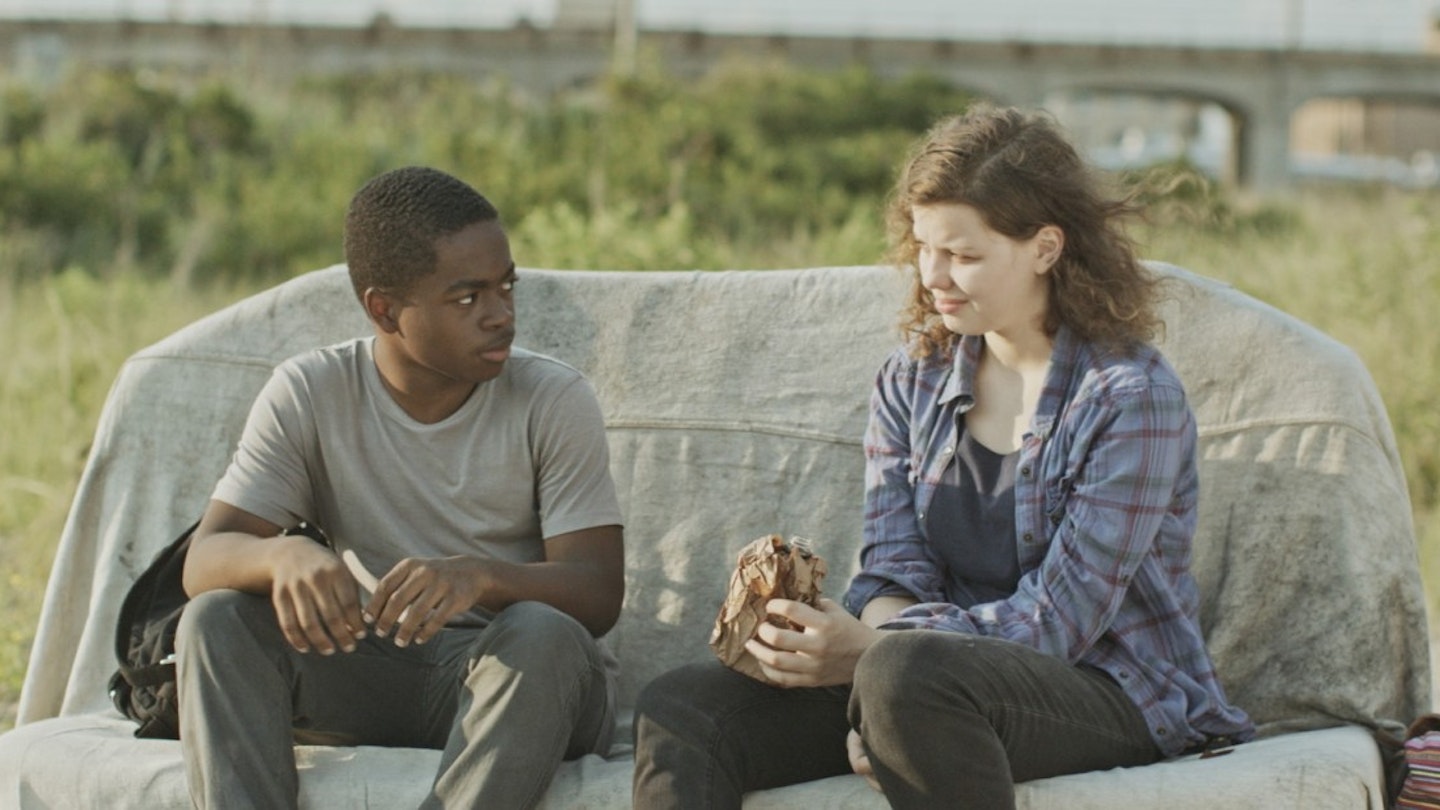When talking with his slightly more mature girlfriend about favourite vampire movies, young Milo (Eric Ruffin) — protagonist of writer-director Michael O’Shea’s debut feature — insists he prefers them to be ‘realistic’. He cites George A. Romero’s 1978 mini-classic Martin as his favourite, while putting in a good word for Let The Right One In. For her part, Sophie (Chloe Levine) says she prefers Twilight and nags the reluctant purist into reading the book — though he’s determined to prove vampires don’t sparkle.
A defining vampire film of the mid-2010s.
Martin is an inescapable reference. The Transfiguration resurrects many plot elements and stylistic touches from Romero’s film, while focusing not on an alienated white youth in Pittsburgh but a black mid-teen from housing projects on the fringes of New York. You can tell how much O’Shea respects ambitious exploitation history by his cameo casting of Milo’s victims — Lloyd Kaufman, longtime head of film studio Troma, plays a wino pounced on in the park in a scene which references Let The Right One In (without the wall-crawling), and Larry Fessenden, auteur of the underrated New York City vampire movie Habit, is an alcoholic trailed home for a shocking assault sequence which inspires Milo to set in motion an intricate, surprising and affecting final act.
The Transfiguration is the horror movie shadow of Moonlight — revolving around a kid for whom becoming a drug dealer might seem more positive options than his chosen path. Essentially a serial killer, he cloaks his activities as vampire role play, writing a journal of “rules for hunting” and theorising that the undead cannot kill themselves. He only lets himself down by sicking up the blood he takes from victims and unwisely mixing with cereal. Labelled a “freak” and harassed by the local street lords and kids his own age who want to join the gang, Milo is self-contained and calm, but never less than deadly even as we sense the coffin-like trap he has made for himself.
There are hints about what has happened in Milo’s past to make him this way, but he’s already a killer when we first see him — engaged in what seems to be turning a trick with a businessman in a public toilet but is actually an act of murder and vampirism, with a gimmick knife-pen standing in for fangs. His concentration is jarred only by a relationship with almost equally damaged, self-harming Sophie — who slips into his life and bed, adding a grace note to a dour film. O’Shea has scenes build steadily, relying on chillingly natural lead performances and credible talk — but the plotting is tight, with random acts of senseless gang violence (another nod to Martin) showing Milo isn’t even unusual in his murderousness, just in the myth he has chosen to wrap it in.
The last reel seems to shift perspective from Milo to Sophie, who is finally terrified by her friend — but Milo’s clever scheme to resolve a vampire quandary needs to be seen from
a distance for the redemptive but shattering payoff to make sense. The closing moments go beyond death in true vampire movie fashion, teasing the possibility of a lift of the coffin lid
or a stirring in the grave — but the voice of the vampire delivers an unexpected message to his unusual acolyte.
